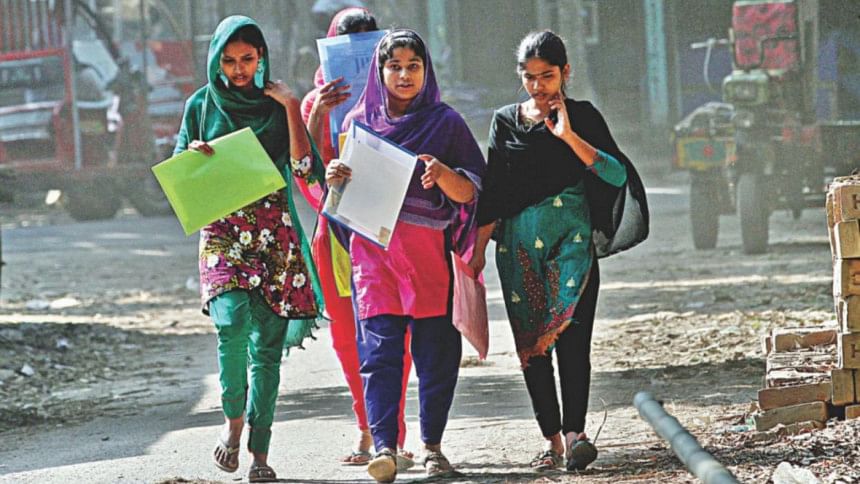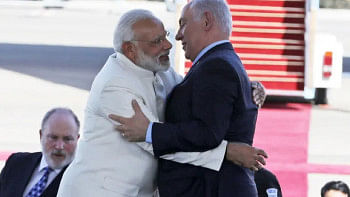Ending Ignorance in Bangladesh

In Satyajit Ray's 1980 dystopian film "Hirok Rajar Deshe" (Kingdom of Diamonds), the king used several measures, such as high taxes, forced labour and brain-washing, to maintain a stranglehold on his people. In addition to these steps, when the king was apprehensive of a threat to his sovereignty, he instructed his education minister to close all the schools in the kingdom. When the education minister was initially taken aback by this decision, the king explained "era joto beshi pore, toto beshi jaane, toto kom maane" (the more they study, the more they learn and the less they obey). Subsequently, the education minister was obliged to order all schools to shut down immediately and permanently.
In many ways, the Hirok Raja (Diamond King) was right. When people are educated, they learn about the world around them, and begin to think independently. Such free thinking may pose a serious threat to the absolute power of any totalitarian regime—as George Orwell aptly pointed out, "ignorance is strength". Since ignorance is the strength of authoritarian governments, empowering people with education and ending their ignorance is the pathway towards a democratic society and a developed country.
The Sustainable Development Goals (SDGs) acknowledge the vital role of education in fostering democracy and facilitating development. SDG 4 calls upon countries to ensure inclusive and equitable quality education and promote lifelong learning opportunities for all. Bangladesh has made good progress, at least quantitatively, on indicators under SDG 4. Lower secondary completion has followed a weakly cyclical upward trend since 1998. According to data from UNESCO, the lower secondary completion rate for both sexes increased from 48.8 per cent in 1998 to 58.9 per cent in 2003. However, there was a reversal of this progress in the subsequent years as lower secondary completion rate fell to 52.4 per cent in 2006. Thereafter, there were a few years of gradual improvements in the lower secondary completion rate, followed by jumps in 2013 and 2016. In 2017, the lower secondary completion rate for both sexes stood at 77.6 per cent. Interestingly, during the period of 1998 to 2017, the lower secondary completion rate has been higher for females compared to males. For example, in 1998 the lower secondary completion rate was 2.10 per cent higher for females compared to males. This difference later increased significantly, and in 2002 the lower secondary completion rate was 16.55 per cent higher for females compared to males. Apart from lower secondary completion rates, primary education completion rates also showed signs of improvement. Primary completion rate increased from 64.26 per cent in 2005 to 118.55 per cent in 2017. However, completion rates above 100 per cent are problematic since they indicate that some students may be failing their classes and repeating the same grade.
In 2001, literacy rates were lower among female youth aged 15-24, compared to male youth. However, in 2011, literacy rates were higher among female youth compared to male youth. The gender parity index of youth literacy rate has been very close to, or within, the upper and lower bounds of parity since 2012. Literacy rate of the adult population, aged 15 and above, increased from 35.32 per cent in 1991 to 47.49 per cent in 2001. The youth literacy rates are higher than adult literacy rates during the period 1991-2017, which implies that there has been a steady improvement in literacy in Bangladesh over time. Youth literacy rates are higher for females, starting from the year 2007, which shows that Bangladesh has managed to improve access to education for females during the period 2007-2017.
Despite the progress made by Bangladesh in achieving SDG 4, a number of key issues remain. In developing countries like Bangladesh, enforcing mandatory secondary schooling may often be difficult to implement in practice. However, research has shown that both conditional and unconditional cash transfers are conducive towards increasing enrolment rates. Nevertheless, whilst school enrolment in Bangladesh has increased over the years, ensuring quality education and preventing dropouts are challenges that need to be addressed urgently. On average, educational outcomes in Bangladesh are substantially better in private and urban schools, compared to public and rural schools. This means that the students from poor families are being deprived of high quality education. Basic education has been provided as a fundamental right, but quality education has been reserved as an elitist privilege. Such inequities in education tend to perpetuate inequalities in income and wealth as well.
In the upcoming book titled, "Four Years of SDGs in Bangladesh: Measuring Progress and Charting the Path Forward", the Centre for Policy Dialogue (CPD) outlines a number of recommendations for the implementation of SDG 4 in Bangladesh. These include: i) instilling good governance in educational institutions by increasing the participation of students and parents in their functioning and operation; ii) increasing funding for educational institutions in remote rural areas and educational institutions that serve left-behind communities; iii) improving means of assessment of learning so that both cognitive and non-cognitive skills are adequately tested; iv) encouraging international cooperation to strengthen university education and research; and v) improving the quality of teacher training and implementing continuous monitoring and evaluation systems to check the effectiveness of training. Bangladesh has already made great progress in ensuring access to education, and if these recommendations can be followed through properly, we will be able to move even closer towards achieving SDG 4 and ensuring inclusive and equitable quality education for all.
Syed Yusuf Saadat is Senior Research Associate, Centre for Policy Dialogue.

 For all latest news, follow The Daily Star's Google News channel.
For all latest news, follow The Daily Star's Google News channel. 



Comments